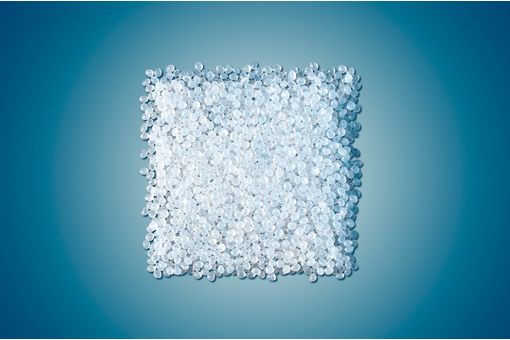Interviews
Researchers are spinning spider silk from goats' milk
25 May '10
6 min read
So far, Lewis has not seen any differences in the health, appearance or behavior in the transgenic versus the "regular" goats.
"In lots of ways, these goats are a lot more pampered because they are very valuable," he notes.
Lewis knows that the topic is a little baffling, but says with the appropriate explanation, even youngsters can have an understanding of the research. The cool spiders and adorable baby goats help!
"We go to preschools, we take spiders and we talk about what we do. We talk to senior citizens at Rotary and Kiwanis clubs. So from 3- or 4-year-olds to 90-year-olds, I think most people can understand the kinds of things we are doing. They may not understand the details, but I think they get an idea; they understand about spider silk and they know that it's strong, and they understand that you can't just farm spiders, so you've got to come up with another way to make the material. And, I think they appreciate that," says Lewis.
Chemical engineer Heather Rothfuss says she never could have imagined the spider-goat combo before she began work on this project. She also educates the community as well as her students at the university about the research.
She recently took one of the large golden orb weaver spiders to her son's preschool.
"Most of the kids held her; the teachers were terrified," laughs Rothfuss.
Rothfuss says explaining the genetic engineering aspect of the project is important, since there are critics of such procedures.
"They may have opposition to different things but it's nice when it's based in reality," she says. "When people think you're doing 'the Frankenstein thing,' just out of scientific curiosity, then there's a lot of anger involved. But once you start talking about applications, people warm up. My students talk a lot about ethics and scientific implications."
Many of the applications for spider silk involve medical problems. The silk could be used for eye sutures, as well as for certain facial injuries. There is even research on jaw repair, especially for veterans returning home from Iraq and Afghanistan.
"These jawbone injuries are hard to heal as the jaw repair material has to be strong enough to allow use of the jaw during healing," Lewis explains. "Current materials have to be too thick to work so, by adding spider silk proteins to them, we hope to make them thin enough."
Even larger quantities of the silk might someday be produced if the silk genes can be introduced into alfalfa plants.
"We chose alfalfa for a couple of reasons," says Lewis. "One is it's produced and widely distributed across the country, so there's a good system for being able to harvest it and transport it. The other thing is alfalfa produces a pretty high protein content. It is 20-25 percent protein, so we think it's an ideal crop for this use."
And after extracting the silk protein from the alfalfa, the rest of the alfalfa plant could be used to make ethanol.
It may take a few more years before your doctor calls for the "spider silk suture" for a joint replacement or an organ transplant. But it takes awhile to catch up to the 400 million years spiders have had to perfect their spinning skills!
"In lots of ways, these goats are a lot more pampered because they are very valuable," he notes.
Lewis knows that the topic is a little baffling, but says with the appropriate explanation, even youngsters can have an understanding of the research. The cool spiders and adorable baby goats help!
"We go to preschools, we take spiders and we talk about what we do. We talk to senior citizens at Rotary and Kiwanis clubs. So from 3- or 4-year-olds to 90-year-olds, I think most people can understand the kinds of things we are doing. They may not understand the details, but I think they get an idea; they understand about spider silk and they know that it's strong, and they understand that you can't just farm spiders, so you've got to come up with another way to make the material. And, I think they appreciate that," says Lewis.
Chemical engineer Heather Rothfuss says she never could have imagined the spider-goat combo before she began work on this project. She also educates the community as well as her students at the university about the research.
She recently took one of the large golden orb weaver spiders to her son's preschool.
"Most of the kids held her; the teachers were terrified," laughs Rothfuss.
Rothfuss says explaining the genetic engineering aspect of the project is important, since there are critics of such procedures.
"They may have opposition to different things but it's nice when it's based in reality," she says. "When people think you're doing 'the Frankenstein thing,' just out of scientific curiosity, then there's a lot of anger involved. But once you start talking about applications, people warm up. My students talk a lot about ethics and scientific implications."
Many of the applications for spider silk involve medical problems. The silk could be used for eye sutures, as well as for certain facial injuries. There is even research on jaw repair, especially for veterans returning home from Iraq and Afghanistan.
"These jawbone injuries are hard to heal as the jaw repair material has to be strong enough to allow use of the jaw during healing," Lewis explains. "Current materials have to be too thick to work so, by adding spider silk proteins to them, we hope to make them thin enough."
Even larger quantities of the silk might someday be produced if the silk genes can be introduced into alfalfa plants.
"We chose alfalfa for a couple of reasons," says Lewis. "One is it's produced and widely distributed across the country, so there's a good system for being able to harvest it and transport it. The other thing is alfalfa produces a pretty high protein content. It is 20-25 percent protein, so we think it's an ideal crop for this use."
And after extracting the silk protein from the alfalfa, the rest of the alfalfa plant could be used to make ethanol.
It may take a few more years before your doctor calls for the "spider silk suture" for a joint replacement or an organ transplant. But it takes awhile to catch up to the 400 million years spiders have had to perfect their spinning skills!
University of Wyoming, National Science Foundation
Popular News
Leave your Comments
Editor’s Pick
































-Ltd..jpg?tr=w-120,h-60,c-at_max,cm-pad_resize,bg-ffffff)





.jpg?tr=w-120,h-60,c-at_max,cm-pad_resize,bg-ffffff)
.jpg?tr=w-120,h-60,c-at_max,cm-pad_resize,bg-ffffff)






